If you’ve ever wanted to grow a fruit tree that’s both unique and rewarding, the mayhaw tree (Crataegus aestivalis) is a fantastic choice. Native to the southern United States, mayhaws are famous for their tart, flavorful berries, which are perfect for making jams, jellies, and sauces. Beyond their culinary appeal, mayhaw trees also add charm to your garden with their delicate flowers, autumn foliage, and wildlife-friendly characteristics. In this guide, we’ll explore everything you need to know about planting mayhaw trees, caring for them, and designing a beautiful garden around them.
What Is a Mayhaw Tree?
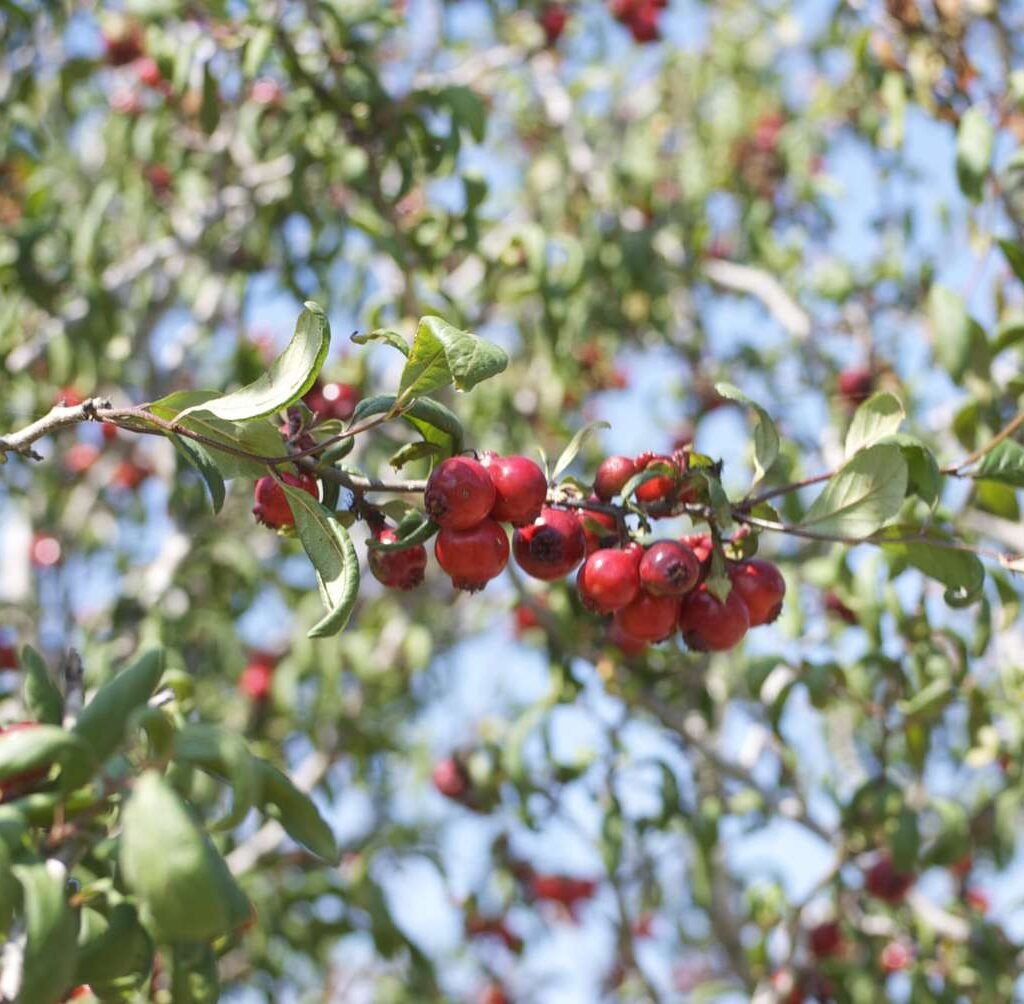
Mayhaw is a small to medium-sized fruiting tree in the hawthorn family, producing round, red or dark pink berries in late spring to early summer. These berries are highly valued for mayhaw jelly, a Southern delicacy prized for its tart-sweet flavor. Mayhaws are hardy, drought-tolerant trees that grow well in moist soils and are often found near wetlands, ponds, or slow-moving streams in their native habitats.
In addition to producing delicious fruit, mayhaws provide ecological benefits:
- Attract Pollinators: Bees and other pollinators are drawn to their fragrant white blossoms in spring.
- Support Wildlife: Birds and small mammals feed on the berries.
- Ornamental Value: Mayhaws have attractive foliage and spring flowers, making them suitable for landscape planting.
Choosing the Right Location for Planting Mayhaw
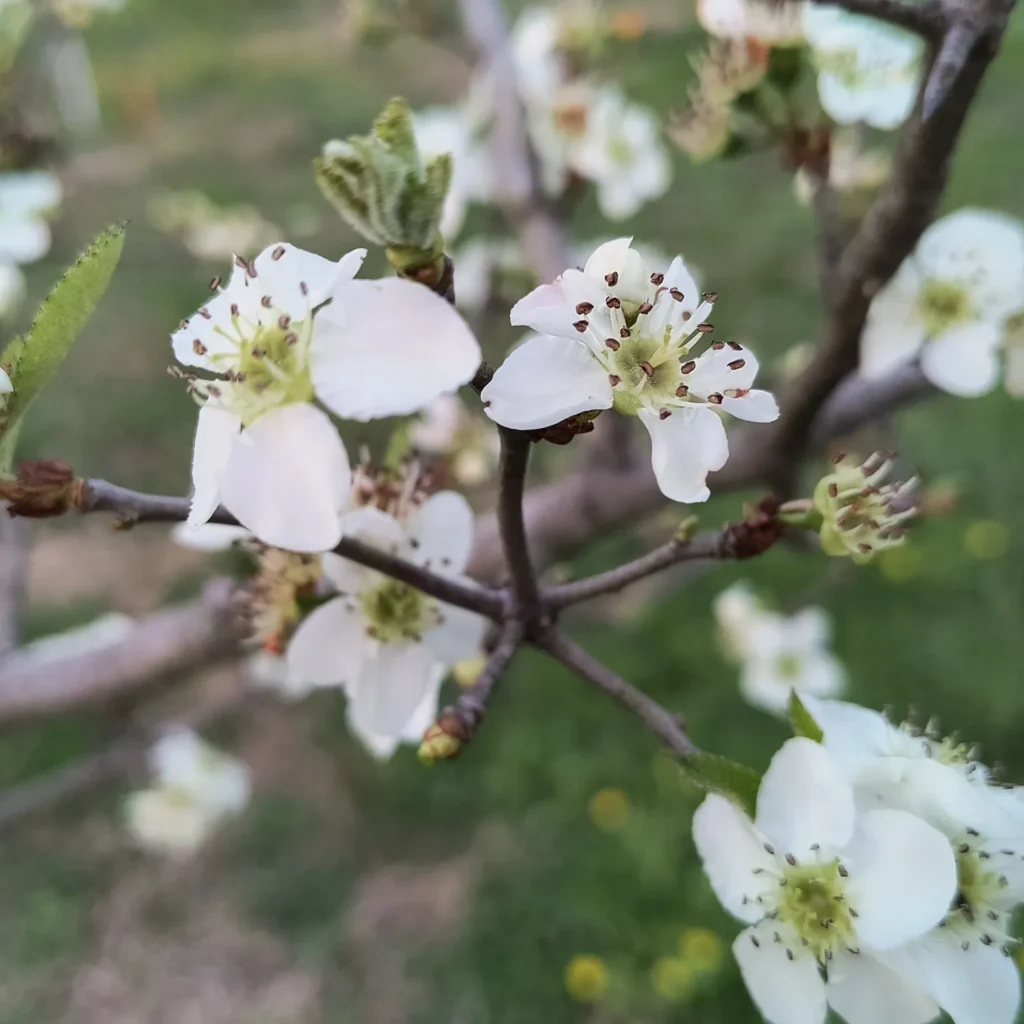
To ensure a healthy mayhaw tree, consider the following when selecting a planting site:
1. Sunlight
Mayhaw trees thrive in full sun, requiring at least 6 hours of direct sunlight daily. While they can tolerate partial shade, fruiting may be reduced.
2. Soil
Mayhaws prefer moist, well-drained soils. They are highly adaptable to different soil types, including clay, loam, and sandy soils, but slightly acidic soil (pH 6.0–6.5) is ideal. They tolerate wetter soils better than many other fruit trees, making them suitable for low-lying areas or near ponds.
3. Space
Plant mayhaws at least 15–20 feet apart to allow for proper airflow and sunlight exposure. These trees can grow 15–25 feet tall with a similar spread, so spacing is crucial to prevent overcrowding.
Planting Your Mayhaw Tree
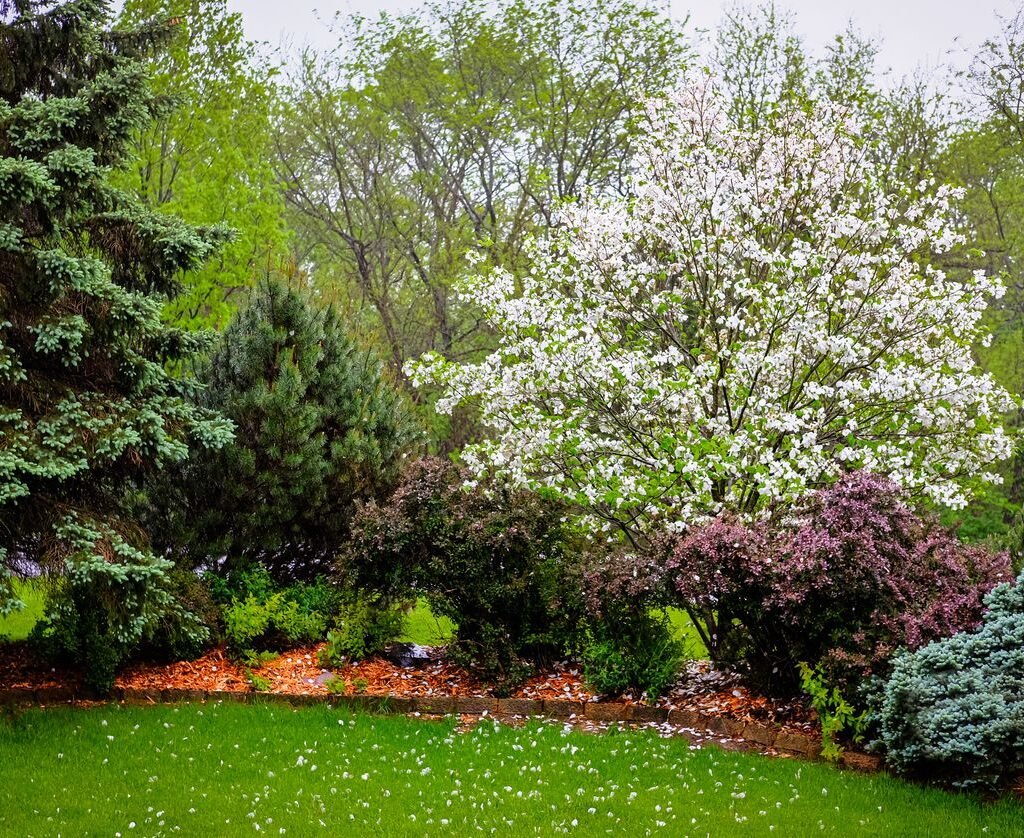
1. Timing
The best time to plant mayhaw trees is in early spring or late fall, when the tree is dormant. This helps reduce transplant shock and promotes healthy root establishment.
2. Steps to Plant
- Dig the Hole: Make a hole twice as wide and slightly deeper than the tree’s root ball.
- Soil Preparation: Mix the excavated soil with compost or well-rotted manure to enrich the planting area.
- Planting: Place the tree in the hole, ensuring the root crown is level with or slightly above ground.
- Backfill and Water: Fill the hole with soil, gently firming around the roots. Water thoroughly to settle the soil.
- Mulch: Apply 2–3 inches of mulch around the base to retain moisture and suppress weeds. Keep mulch a few inches away from the trunk to prevent rot.
Caring for Mayhaw Trees
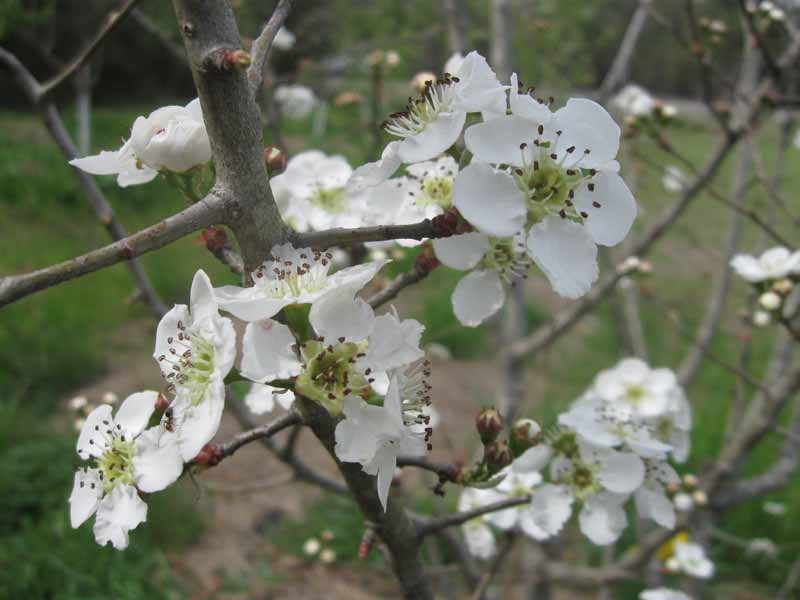
Proper care ensures your mayhaw tree thrives and produces abundant fruit.
1. Watering
Young mayhaw trees need regular watering during their first year to establish roots. Once mature, they are relatively drought-tolerant but will perform best with consistent moisture, especially during flowering and fruiting.
2. Fertilizing
Fertilize your mayhaw tree in early spring using a balanced fertilizer or compost. Avoid excessive nitrogen, as it promotes leafy growth at the expense of flowering and fruiting.
3. Pruning
Pruning helps maintain the tree’s shape, health, and productivity:
- Remove dead, damaged, or diseased branches.
- Thin crowded branches to improve sunlight penetration and airflow.
- Lightly prune after fruiting to encourage new growth and flower bud formation for the next season.
Flowering and Pollination
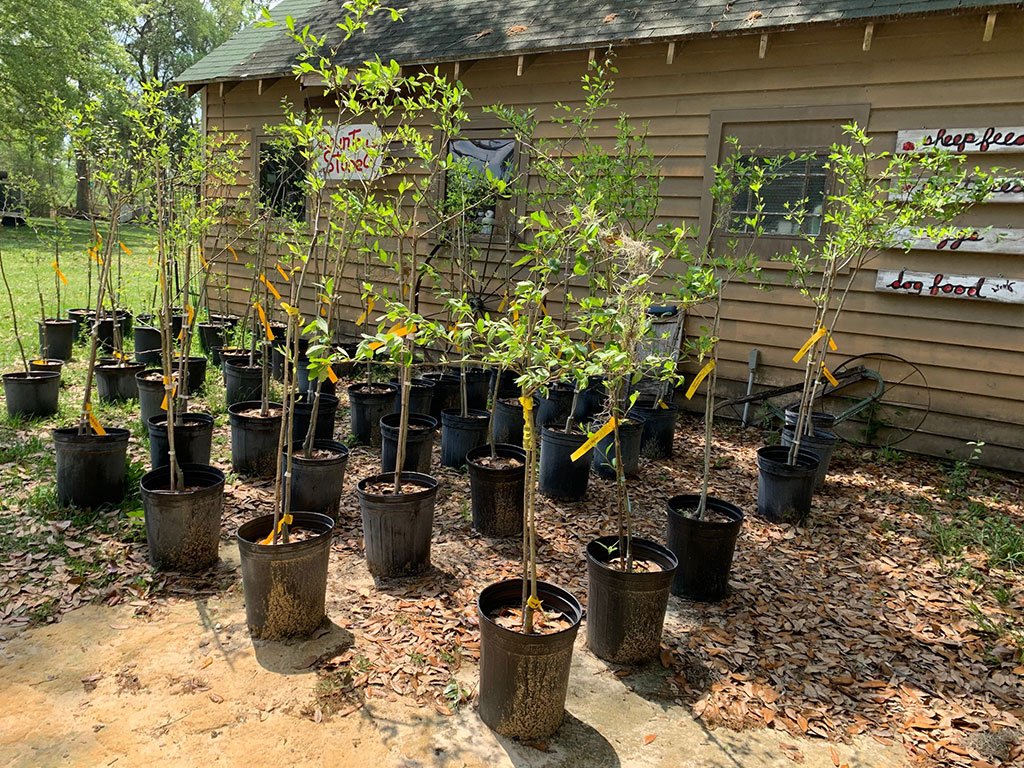
Mayhaw trees produce clusters of fragrant white flowers in early spring. These blossoms attract bees and other pollinators essential for fruit set. Planting more than one variety of mayhaw tree enhances cross-pollination, which improves berry yield and size.
Fruiting and Harvesting Mayhaws
Mayhaws produce small, tart berries typically ripening in late spring to early summer:
- Color: Fruit turns red, orange-red, or dark pink when ripe, depending on the variety.
- Harvesting: Pick berries when fully colored and slightly soft to the touch. Handle carefully, as they are delicate and can bruise easily.
- Uses: Mayhaw berries are most famous for making jelly but can also be used in sauces, syrups, and baked goods.
Companion Planting and Garden Design
A well-planned garden around your mayhaw tree can enhance its beauty and productivity:
1. Companion Plants
- Pollinator-Friendly Flowers: Plant bee-attracting flowers such as lavender, borage, or clover nearby to increase pollination.
- Cover Crops or Mulches: Plant low-growing ground covers to retain soil moisture and reduce weeds.
2. Landscape Ideas
- Ornamental Centerpiece: Use a mayhaw tree as a focal point in your garden.
- Wet Area Planting: Ideal for planting near ponds, streams, or rain gardens.
- Mixed Fruit Garden: Combine mayhaws with other small fruit trees for a productive edible landscape.
Common Problems and Solutions
Mayhaw trees are hardy but can encounter occasional issues:
- Pests: Aphids and caterpillars may feed on leaves. Use neem oil or insecticidal soap for control.
- Diseases: Fire blight is a potential concern. Prune affected branches immediately and practice good sanitation.
- Fruit Drop: Mayhaws sometimes drop immature berries due to drought, nutrient deficiency, or poor pollination. Maintain consistent watering and soil fertility.
Tips for Success
- Patience: Mayhaw trees may take 3–5 years to produce substantial fruit, especially if grown from seeds. Grafted trees produce earlier.
- Protect Young Trees: Use stakes or guards to prevent wind damage or animal browsing.
- Regular Inspection: Monitor for pests and diseases to ensure a healthy tree.
- Mulch and Watering: Consistent moisture and mulch help trees thrive and reduce stress.
- Pollination: Plant two or more trees or different varieties for improved fruit set.
Garden Tour Inspiration
When designing a garden around your mayhaw tree, consider creating a fruit-focused garden:
- Pathways: Line paths with pollinator-friendly plants leading to your mayhaw tree.
- Seating Areas: Add benches or a small patio under or near the tree to enjoy its spring flowers.
- Containers: Use grow bags or large pots to plant smaller mayhaw varieties if space is limited.
- Wildlife Habitat: Plant native shrubs or flowers nearby to attract beneficial insects and birds.
Conclusion
Planting mayhaw trees offers both culinary and aesthetic rewards. From fragrant white flowers and tart, flavorful berries to wildlife attraction and ornamental appeal, mayhaws are a versatile addition to any garden. By following proper planting techniques, providing consistent care, pruning for health, and encouraging pollination, your mayhaw tree can thrive for years and provide delicious fruit.
Whether you are creating a small backyard oasis, a wetland garden, or a mixed fruit orchard, mayhaws are a wonderful choice for gardeners seeking unique, edible, and beautiful trees. Start your mayhaw planting journey today, and enjoy a garden filled with flowers, fruit, and nature’s charm.
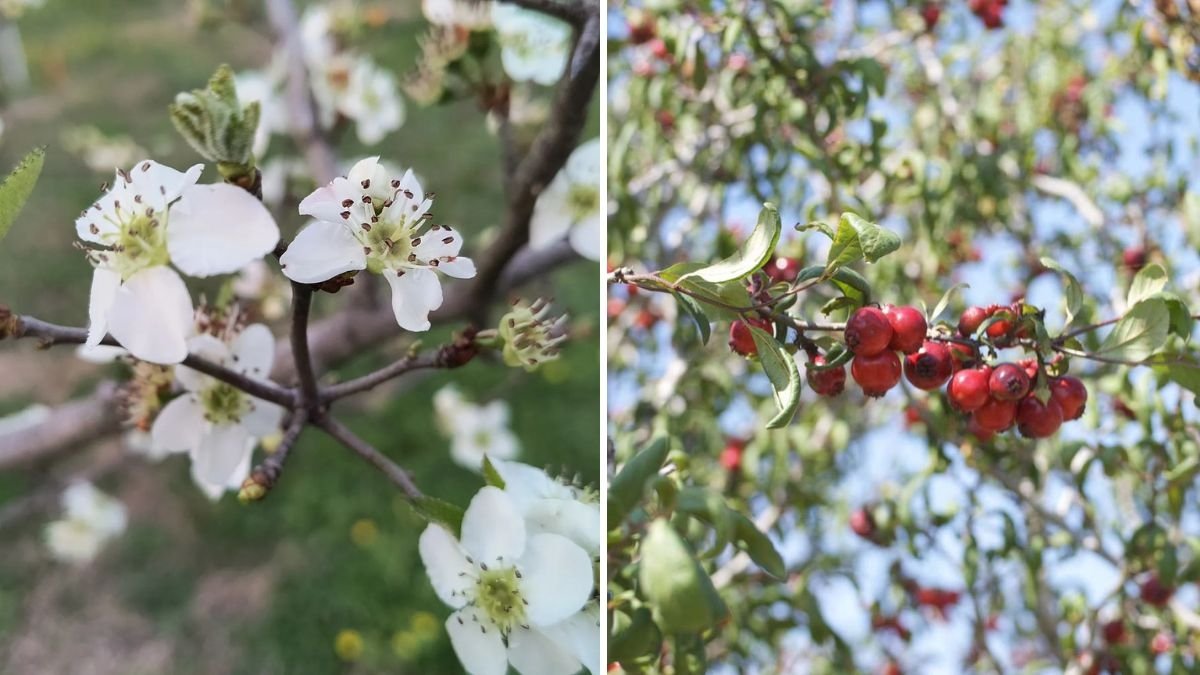

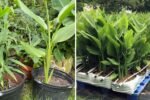



Leave A Comment